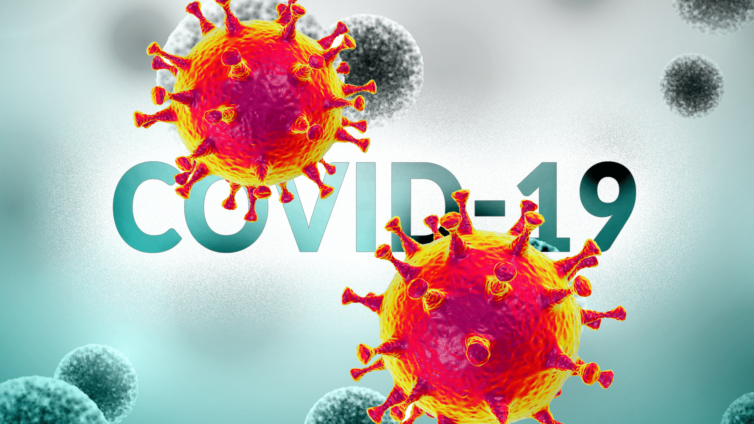Ghana has had its share of the impact of the Covid-19 since it recorded its first two cases in March 2020. Following that, the government has recommended several measures: social distancing, personal hygiene, coughing and sneezing etiquettes etc. Restricted movement, termed ‘lockdown’, within Greater Accra and Kumasi were also enforced.
This article explores how the livestock industry was affected and the ripple effect on animal protein accessibility: with focus on two major industry players.
Paga animal entry point, bordering Burkina Faso is an active checkpoint with an influx of livestock into the country. A total of 3579 cattle, 1985 sheep and 3978 goats were imported three weeks before the lockdown but were reduced to 1525 (57.4%), 780 (60.7%) and 1423 (64.2%) respectively during the three weeks lockdown period.
The Kumasi Abattoir, dedicated for slaughter and trade of meat, recorded an average slaughter of 725 cattle and 533 for sheep and goats respectively three weeks before lockdown but this was reduced to 308 (57.5%) for cattle and 236 (23.4%) for sheep and goats respectively.
These figures represent the negative impact on some major industry players and undoubtedly, these effects were witnessed along the livestock value chain, including livestock cargoes, butchers and “chop bar” operators. Consequently, meat prices were also affected. On average, beef increased from GHc12.00 to GHc16.00 (33.3%) and chevon and mutton from GHc14.00 to GHc16.00 (14.3%). Obviously, animal protein availability was less and at the same time more expensive.
Impact on health and safety at the abattoir
Being an essential commodity, those in the food value chain worked within the lockdown period whilst observing safety measures. At the abattoir, temperature was taken before entry was permitted into the facility and hand washing was facilitated, although only at the main entrance. Outside the facility, adherence to safety measures was absent.
Though no substantial evidence has indicated COVID-19 being transmitted from meat to humans, non-adherence to strict public health protocols announced by the government leaves workers and buyers at risk of a possible horizontal transmission in the presence of an asymptomatic carrier. The continuous disregard to safety measures post lockdown and cases still on the ascendency is a looming disaster in the livestock industry.
The way foward
The current pandemic has revealed the nation’s lack of investment and prioritization in the livestock sector towards self-sufficiency. Reviving animal production and health include making available stable farms across the nation to reduce dependency on neighboring countries.
Government must start implementing the proposals for developing the livestock industry under the “Rearing for Food and Jobs” suggested to them by the veterinary services and allied departments. In doing so, the government through these agencies can quickly prevent disease outbreaks and bad performance whilst ensuring greater sustained productivity. This will enable animal protein availability and at affordable prices.
COVID-19 has presented an opportunity for renewal of “operation feed yourself”. Several homes have sufficient spaces to start small gardens and animal farms, enough to sustain the family. Animals worth considering include sheep, goats, rabbits, grasscutters and poultry. For example, a simple wooden shed with solid ground of dimensions 1.8m (l) x 1.8m (w) x 2.5 m (h) is suitable for ten small-sized sheep and goats. Rabbitry of average unit space 3 x 1.2m will suffice for about nine animals. Grasscutters, requiring more space, will require 1.6-2m² for five animals; one male to four females. For poultry, an average of 1m² per bird is enough. Aside from poultry, these animals mostly feed on common grasses such as elephant grass. One could supplement with commercially prepared feed, rice, wheat bran and plant residues.
Engaging supermarkets and entrepreneurs on making these livestock available on shelves and providing digital platforms for such trades will further increase accessibility to animal products. In rural areas where this technology is not readily available, an alternate method, where already existing markets can have a central contact station or person, with several couriers who can deliver the products to the respective clients. Thus, allowing businesses to run whilst reducing numbers at the various market stations and creating more job opportunities for the young ones.
***
The authors are: Drs William Tasiame, Yesutor Soku, Ekua Esuon Thompson, Benjamin Kissi Sasu, Ewurabena Ntiamoah Bediako, Kingsley Emmanuel Bentum, Ernest Boateng, Oliver Boakye and Obed Yeboah
Latest Stories
-
You’ve got no power to impose fines on us – ECG board members to PURC
13 mins -
Ghana to host Ghana-Cote d’Ivoire Cocoa Initiative Headquarters
23 mins -
Olympism365: IOC, WHO and PATH hold stakeholder engagement in Ghana
25 mins -
War can devastate nation, let’s be thankful for the peace we have – Kofi Sarpong
33 mins -
Ghanaian athletes in Côte D’voire for U-20 Championship
53 mins -
Made in Taadi must happen this year by hook or crook – Kofi Kinaata
1 hour -
Labour unions contemplate May 2 strike over unpaid Tier-2 pension dues
1 hour -
Sedina Tamakloe’s arrest: MoF, MASLOC board can’t be left off the hook – Analyst
1 hour -
Three JHS boys arrested for allegedly gang-defiling 15-year-old colleague
1 hour -
Today’s front pages: Friday, April 19, 2024
2 hours -
Magnus RexDanquah : ‘Breaking the Eight’ – The Greatest Scam Ever since Ackah Blay Miezah’s Gold Deposits claim
2 hours -
You cannot advise a fool – Kofi Kinaata
3 hours -
9-month-old baby dead after father bathed her and mother in acid
4 hours -
Female suspect detained for alleged baby theft in Walewale
5 hours -
Christopher Adu Boahen to be buried on April 25
5 hours

